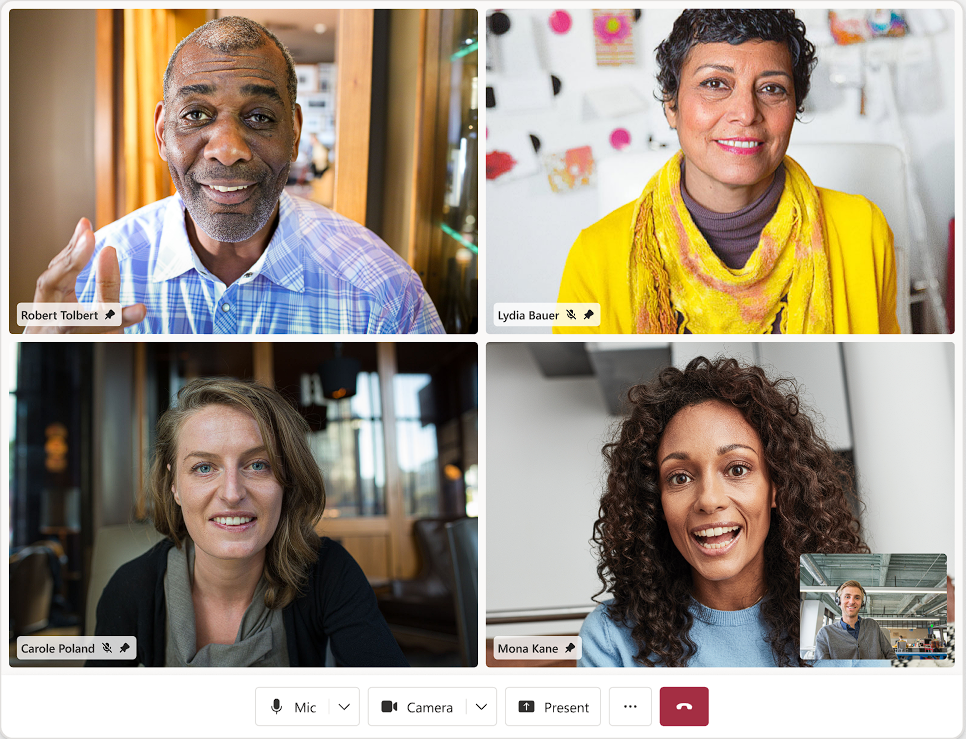Build communication apps for Microsoft Teams users with Azure Communication Services UI Library

Building modern custom communication user experiences for Microsoft Teams users just got easier with the Azure Communication Services UI Library. The UI Library now supports the ability for developers to use a Microsoft Teams identity to power their calling experience. This means developers can now create custom applications for Microsoft Teams users with only a couple lines of code.
The ability for developers to use Microsoft Teams identity, now in public preview, builds on the general availability announcement for support of Microsoft Teams users through the Azure Communication Service Calling SDK and the general availability of UI controls for calling for Azure Communication Services. With these new capabilities, developers can quickly build standalone applications that easily integrate voice and video capabilities seamlessly for Microsoft Teams users.
Figure 1. Calling component enabled for Microsoft Teams users.
The new components provide significant customization capabilities, including color schemes, fonts and icons, and additional customized behavior to truly fit your needs. The Azure Communication Services UI Library is built on top of Fluent UI, bringing a look-and-feel similar to Microsoft Teams out of the box. They are built with Microsoft standards of accessibility and localization to deliver a great experience to all your users
Figure 2. Sample architecture showcasing full use case for leveraging custom applications built with UI Library components and Microsoft Teams client.
We are excited for the opportunities that this new feature on the UI Library creates; enabling you to build more with less code:
- Embed UI Library calling components within a line of business application to enable workers on the field using their Microsoft 365 identity to connect with subject matter experts on Microsoft Teams.
- Leverage UI Library components within devices that are not supported by standard Microsoft Teams clients but support a browser like Mixed Reality headsets or cars.
- Build a custom customer support dashboard for Microsoft Teams users to enable agents to use their existing Teams capabilities and collaborate on-demand with other agents within their Teams tenant.
- And, so much more.
To get started, developers can leverage the existing calling components and composites that are supported by the UI Library. To power the Microsoft Teams user scenario, initialize these components with an access token for Microsoft Teams users.
Published on:
Learn moreRelated posts
Reporting the Use of Emojis in Teams Reactions
This article explains how to use PowerShell to extract audit data to analyze the use of emojis as Teams reactions to chat and channel messages...
From Real-Time Analytics to AI: Your Azure Cosmos DB & DocumentDB Agenda for Microsoft Ignite 2025
Microsoft Ignite 2025 is your opportunity to explore how Azure Cosmos DB, Cosmos DB in Microsoft Fabric, and DocumentDB power the next generat...
Microsoft Teams and Microsoft 365 Copilot: Discover and create agentic users from Teams and M365 Agent Store
Microsoft Teams and Microsoft 365 Copilot will introduce AI-powered Agentic Users—autonomous virtual colleagues with full organizational ident...
Introducing the Explore Pane in Microsoft 365 Copilot
Microsoft 365 Copilot introduces the Explore Pane, a new side panel offering guided, contextual steps in Create, Search, and Notebooks modules...
Retirement of the TeamworkDevice (beta) API in Microsoft Graph
The TeamworkDevice (beta) API in Microsoft Graph will be retired starting December 8, 2025. Organizations should transition to managing Teams ...
Microsoft Purview | Data Lifecycle Management – Introducing secure priority cleanup workflows for OneDrive/SharePoint
Microsoft Purview Data Lifecycle Management now lets admins create Priority Cleanup policies to delete OneDrive and SharePoint content before ...
Microsoft 365 & Power Platform Community Call – November 6th, 2025 – Screenshot Summary
Call Highlights SharePoint Quicklinks: Primary PnP Website: https://aka.ms/m365pnp Documentation & Guidance SharePoint Dev Videos Issues...
Episode 414 – When the Cloud Falls: Understanding the AWS and Azure Outages of October 2025
Welcome to Episode 414 of the Microsoft Cloud IT Pro Podcast.This episode covers the major cloud service disruptions that impacted both AWS an...
How to Improve SharePoint Online Storage Performance and Maintain Document Security
Why Do Businesses Hit the SharePoint Online Storage Limit So Quickly? Because SharePoint is at the heart of Microsoft 365’s collaboration ecos...

